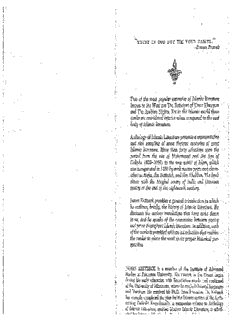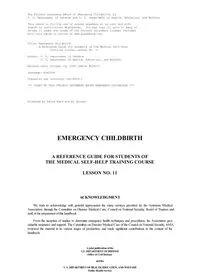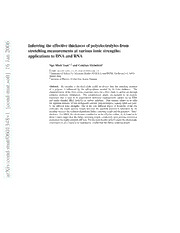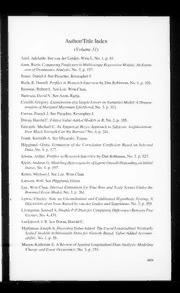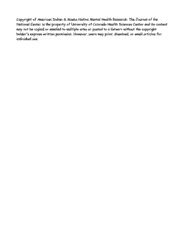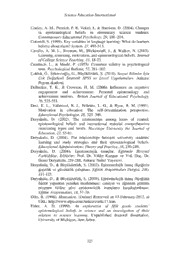
ERIC EJ1044509: An Evaluation of the Pattern between Students' Motivation, Learning Strategies and Their Epistemological Beliefs: The Mediator Role of Motivation PDF
Preview ERIC EJ1044509: An Evaluation of the Pattern between Students' Motivation, Learning Strategies and Their Epistemological Beliefs: The Mediator Role of Motivation
Science Education International I(cid:9) A(cid:9) E(cid:9) Vol. 24, Issue 3, 2014, 312-331 C(cid:9) S(cid:9) Interna onal(cid:9)Council(cid:9)of(cid:9)(cid:9) Associa on(cid:9)for(cid:9)Science(cid:9)Educa on(cid:9) An Evaluation of the Pattern between Students’ Motivation, Learning Strategies and Their Epistemological Beliefs: The Mediator Role of Motivation Ş. ŞEN*, A. YILMAZ†, H. YURDUGÜL‡ ABSTRACT: This study aims at analysing the relations between students’ achievement motivation, learning strategies and their epistemological beliefs in learning through structural equation modelling, and at exploring the mediation role of motivation in the relations between learning strategies and epistemological beliefs. The study group was composed of 446 undergraduate students attending the Faculty of Education. The Motivated Strategies for Learning Questionnaire (MSLQ) in addition to the Epistemological Belief Scale was employed as the instrument of data collection in the research. The data obtained were then analysed via confirmatory factor analysis and the path analysis. In consequence, it was found that the model consisting of such variables as learning strategies, motivation and the belief that learning depends on effort yielded the acceptable fit indices, and it was also found that motivation variable mediated between the relations holding between the belief that learning depends on effort and the learning strategies. KEY WORDS: Motivation, learning strategies, epistemological beliefs, mediation, path model INTRODUCTION An effective process of learning is a process, which is accountable with the traits of the learner, the quality of the teaching process, the learning environment and the design of teaching. As is commonly known, teaching design and the learning environment are constructed by taking the properties of the learner into consideration. Psycho-educational structures are frequently considered in educational research as the properties intrinsic to the learner. However, on considering the inter-relations existing within those psycho-educational structures, a nomological network is established (Cronbach & Meehl, 1955). While the psycho- educational structures consist of high-level mutual relations, the mediator variables sometimes play important roles in this pattern. Determining those mediator variables gives significant clues in constructing the * Corresponding Author: Hacettepe University, schenolschen@gmail.com † Hacettepe University, Turkey ‡ Hacettepe University, Turkey Science Education International learning process and the design of teaching. Motivation, epistemological belief and learning strategies-which are among the important properties of the learner-, are within the scope of this current research. Besides, these are also the variables, which play important roles in learner-centred approaches. Students with high levels of epistemological belief concept will be more successful in using the learning strategies capable of influencing the learning process and in motivating themselves into learning. In addition to the direct effects of epistemological beliefs on learning strategies, these epistemological beliefs will also result in the positive development of learning strategies which are indeed the behaviours and thoughts arising in learning and facilitating learning with the increase of motivation due to students’ sophisticated epistemological beliefs. In this case, describing the variable that motivation mediates in addition to describing the main effects of motivation on achievement is also important. This study examines the ties between students’ epistemological belief, their motivation and their learning strategies; and additionally, it also investigates whether or not the effects of motivation on learning strategies are mediator or not. Epistemological Beliefs Epistemological beliefs, which are personal traits, are the beliefs that individuals have in relation to the nature of knowledge and to acquiring the knowledge (Schommer, 1990; 1994). According to Hofer (2001), epistemological beliefs involve beliefs about the definition of knowledge, how knowledge is constructed, how knowledge is evaluated, where knowledge resides, and how knowing occurs. Epistemological beliefs, which might be considered to be altogether, also form a five-dimensional system of beliefs containing such dimensions as the source of knowledge, organisation or structure of knowledge, stability of knowledge, speed of learning and control of learning; which might be considered independent of one another (Shommer, 1990). Schommer suggests that epistemological beliefs held by individuals may be at differing levels. If individuals’ belief trends are sophisticated, the individuals believe that knowledge is not certain and or absolute, that a great part of it is in development, that a part of it has not yet been explored, and that only a small part of it is stable. Those individuals are knowledgeable and experienced, and they adopt a critical approach towards what they read. Yet those with naive epistemological beliefs are simple and inexperienced, and they believe that a great part of knowledge is certain and stable, that some knowledge will be newly explored, and that only a small portion of knowledge will change. They do not display a critical approach towards what they read, and they are likely to be influenced by what they read (Aypay, 2011a; 2011b; Deryakulu, 2002; Schommer, 1990; 1994). 313 Science Education International Individuals with sophisticated epistemological beliefs are often more successful in their academic life, they employ learning and study strategies more effectively, and are more successful in controlling the extent to which they have comprehended the new knowledge (Schommer, 1990). According to a number of researchers, epistemological beliefs have impacts on such variables as individuals’ ways of processing and interpreting the new knowledge, their levels of comprehension, the criteria to control their levels of comprehension, their choice of study strategies, their higher order thinking forms and problem-solving approaches, and efforts they make and time they spend for learning (Brownlee, Purdie, & Boulton-Lewis, 2001; Hofer & Pintrich, 1997; Tolhurst, 2007). Epistemological beliefs were found to be related to achievement motivation (Brâten& Olaussen, 2005; Brâten& Stromso, 2004; Buehl & Alexander, 2005; Chen & Pajares, 2010; DeBacker & Crowson, 2006; Muis, 2004; Muis & Franco, 2009) and to motivation and learning (Buehl & Alexander, 2005; Cavallo, Rozman, Blickenstaff, & Walker, 2003; Hofer & Pintrich, 1997; Paulsen & Feldman, 1999). Motivation On examining research studies conducted in relation to motivation, it was found that the concept of motivation was defined in different ways. Keller (1983) defines motivation as the direction of effort making a student willing to learn and as an intrinsic power while Schunk (1990) defines it as inclining towards a process of behaviour oriented to a certain goal and sustaining it; Kelecioğlu (1992) as the process enabling any activity to start and being influential in the direction, intensity and continuation of it; Dilts (1998) as a general power directing individuals or organisms to trigger them, as a stimulant or an influence; and Lindner (1998) as the power impelling individuals to attain individual or organisational objectives. Related research in literature has revealed that there is a connection between students’ motivation and their epistemological beliefs (Buehl & Alexander, 2005; Hofer, 1994, quoted by, Paulsen & Feldman, 1999; Paulsen & Feldman, 1999; Schutz, Pintrich, & Young, 1993, quoted by Paulsen & Feldman, 1999; Şen & Yılmaz, 2012). Bandura (1997) and Dweck and Leggett (1988) point out that the beliefs held by individuals are the factors affecting their thoughts, motivation and behaviours (quoted by Buehl & Alexander, 2005). Buehl and Alexander (2005), on the other hand, found that students with sophisticated epistemological beliefs had higher levels of motivation. In a research study, Buehl (2003) developed a model showing that students’ epistemological beliefs had direct effects on their achievement, motivation and cognitive processes (that is to say, their use of strategies). On examining the results, it was found that 314 Science Education International epistemological beliefs affected students’ motivation, their cognitive processes and learning strategies, and that their epistemological beliefs also indirectly influenced their achievement and their academic performance. It was pointed out by the researcher that, according to the findings, further research was needed in order to explore the relations between epistemological beliefs and motivation. Learning Strategies Learning strategies are the behaviours and thoughts expected of learners during learning and influential in their process of encoding, and facilitating their learning. They are the cognitive plans designed so as to fulfil a duty (Weinstein & Mayer, 1986). They range from such simple analysis abilities as stating the main idea and underlining it to more complicated processes of thought such as using analogies to enable someone to set up associations between prior knowledge and new knowledge (Gözütok, 1990). According to Wittrock (1986), learning strategies are students’ behaviours and thoughts arising in learning and affecting motivation, encoding of knowledge and permanence and transfer of it. Mayer (1988) suggests that learning strategies are the various thoughts and behaviours which are to be influential in individuals’ processing the new knowledge to be acquired in their mind (quoted by Deryakulu, 2004). Learning strategies could be defined as learners’ displaying the efforts needed for their putting the new knowledge presented to them into mental processes and making sense of it, and thus constructing it in the learning-teaching process or in their individual activities (Tay, 2004, 2005). Such factors as the nature of the task, the orientation made by the teacher or the teaching materials, students’ prior knowledge, their knowledge of learning strategies, their aims, their attitudes towards and beliefs in learning, the type and level of motivation are the factors influential in students’ determining which learning strategy to use, in their using the selected strategy effectively and in their evaluating the results of strategy use (Deryakulu, 2004). In research conducted by Pintrich and De Groot (1990) the relations between students’ academic achievement, their motivation and learning strategies were investigated. Consequently, it was found that there was a positive relation between self-efficacy and intrinsic goal orientation, which were the sub-dimensions of motivation, and learners’ cognitive behaviours and their performance; and it was also found that self- regulation, self-efficacy and test anxiety- the sub-dimensions of motivation- were the variables best predictive of academic performance. In their research, Zusho, Pintrich and Coppola (2003) investigated whether or not learners’ motivation, their cognitive and metacognitive 315 Science Education International learning strategies were predictive of their performance in the chemistry course. On evaluating the results of the study, it was concluded that the learners with higher self-efficacy and task value levels were better at the courses than those employing other learning strategies. Another conclusion reached by the researchers was that the students using the rehearsal strategy- a strategy of learning- displayed better performances than those using other strategies. In research performed by Yumuşak, Sungur and Çakıroğlu (2007), the effects of students’ motivational beliefs and their use of cognitive and metacognitive learning strategies on their achievement in biology were examined. In consequence, it was found that extrinsic goal orientation and task value- the sub-dimensions of motivation- and rehearsal learning strategy, regulation learning strategy, time/study environmental management, and peer learning- the sub- dimensions of learning strategies were significantly correlated with students’ achievement in biology. Besides, it was also found that the use of extrinsic goal orientation, rehearsal learning strategy and peer learning were in reverse correlation with students’ achievement in biology. In literature, it was pointed out that learners’ epistemological beliefs influenced the teaching strategies chosen (Cotterall, 1999; Deryakulu, 2002, 2004, 2006; Horwitz, 1999; Mauren, 2010; Kardash & Howell, 2000; Schommer, Crouse, & Rhodes, 1992; Schreiber & Shinn, 2003; Tsai, 1997). Epistemological beliefs affect the type and level of learners’ cognitive and metacognitive learning strategies, and they also affect students’ looking at the knowledge in a critical way and their ways of thinking. Students with sophisticated epistemological beliefs are capable of employing cognitive and metacognitive learning strategies in a more effective and efficient way (Deryakulu, 2006). According to Richter and Schmid (2009), students with sophisticated epistemological beliefs use the simple learning strategies (such as rehearsal) less while they use deep strategies (learning approaches) more often. Köller, Baumert and Neubrand (2000) found positive correlations between high school students’ simple learning strategies (rehearsal) and their beliefs in the truth and accuracy of knowledge whereas Köller (2001), Schiefe, Emgassen and Moschner (2003) found no significant correlations between high school and university students’ simple learning strategies (rehearsal) and their beliefs in the truth and accuracy of knowledge. The Purpose and Significance of the Study Facilitating meaningful learning efficiently depends on conducting learning rather than teaching, students’ acquiring the knowledge through taking active roles in learning rather than transferring the knowledge directly into the students, on the belief that each learner’s individual differences are influential in learning, and on students’ constructing the 316 Science Education International new knowledge on their own. In pieces of research performed in literature such cognitive and motivational variables, as prior knowledge, attitudes, logical thinking, learning approaches, self-efficacy, goal orientation, and epistemological beliefs were studied (Buehl, 2003; Cavallo, Rozman, Blickenstaff, & Walker, 2003; Conley, Pintrich, Vekiri, & Harrison, 2004; Elder, 1999; Murphy, Buehl, Monoi, & Long, 2002; Paulsen & Feldman, 1999, 2005; Schommer, 1998; Sungur & Tekkaya, 2006). Of these variables affecting students’ learning, motivation, epistemological beliefs and learning strategies are within the scope of this research. The intrinsic goal orientation, extrinsic goal orientation, task value, self-efficacy and belief in learning control sub-dimensions of the Motivated Strategies for Learning Questionnaire (MSLQ) were used in determining students’ achievement motivation- as was the case in the research conducted by McKenzie and Gow (2004) and by McKenzie, Gow and Schweitzer (2004). And for the learning strategies, the factors of organisation, elaboration, metacognitive self-regulation, effort management and time/study environmental management of the MSLQ were used; because those factors account for the self-regulation definition offered by Zimmerman (1990) and reflect the deep learning approach (McKenzie & Gow, 2004; McKenzie et al., 2004). The factor of the belief that there is only one truth measures the beliefs in knowledge while the factors of the belief that learning depends on effort and the belief that learning depends on ability measure beliefs in learning. Due to the fact that this research is in search of studying students ‘epistemological beliefs in learning, the factors of “the belief that learning depends on effort” and “the belief that learning depends on ability” were used in this research; and the hypothesis model in Figure 1 was developed accordingly. Thus, the purpose of this research is to analyse the correlations between educational faculty students’ epistemological beliefs in learning, their achievement motivation, and learning strategies. In addition to that, another aim of the research is to examine whether students’ epistemological beliefs influence their learning strategies directly or through the motivation variable. A hypothesis model established in accordance with the theoretical structure is shown in Figure 1. 317 Science Education International Figure 1. Hypothesis Model Holding between Epistemological Belief, Motivation and Learning Strategies RESEARCH QUESTIONS Answers were sought to the following questions in this research: 1. What is the structural equation model explaining the relations between educational faculty students’ epistemological beliefs in learning, their learning strategies and achievement motivation? 2. Do the students’ epistemological beliefs in learning influence their learning strategies directly or through the motivation variable? RESEARCH METHODOLOGY The Study Group A total of 446 educational faculty students, 308 of whom were girls and 138 of whom were boys, took part in the research. 78 of the students were in biology teaching department, whereas 66 were in physics teaching, 117 were in chemistry teaching, and 185 were in science teaching departments. 318 Science Education International Data Collection Tools The Motivated Strategies for Learning Questionnaire (MSLQ) was developed by Pintrich, Smith, Garcia and McKeachie (1991) so as to evaluate university students’ motivational adjustment and their use of different learning strategies for their courses at university. The questionnaire was adapted into Turkish by Büyüköztürk, Akgün, Özkahveci and Demirel (2004). It is a 7-pointed Likert type questionnaire. The MSLQ is composed of two main parts; namely motivation and learning strategies. The motivation part includes 31 items and 6 sub- dimensions. The sub-dimensions are: intrinsic goal orientation (IGO) (or learning goals), extrinsic goal orientation (EGO) (or performance goals), task value (TV), control of learning beliefs (COLB), self-efficacy for learning and performance (SFLAP), and test anxiety (TA). The learning strategies part, on the other hand, is related to differing cognitive and metacognitive strategies employed by students, and consists of 31 items. Besides, in addition to the 31 items, there are also 19 items related to the management of different sources. The learning strategies part contains 9 sub-dimensions; namely: rehearsal, organization, elaboration, critical thinking, metacognitive self-regulation, time/study environmental management, effort regulation, peer learning, and help seeking (Pintrich, et al., 1991; Büyüköztürk et al., 2004). High scores received from a factor in the Motivated Strategies for Learning Questionnaire shows that the student has the property related to the factor at high levels (Pintrich, et al., 1991; Büyüköztürk et al., 2000). This study employs the intrinsic goal orientation, extrinsic goal orientation, task value, self-efficacy for learning and control of learning beliefs sub-dimensions in order to determine students’ achievement motivation (McKenzie & Gow, 2004; McKenzie et al., 2004). On the other hand, the factors of organization, elaboration, metacognitive self-regulation, effort management, and time/study environmental management were used for the learning strategies. These factors account for the definition of self-regulation offered by Zimmerman (1990), and are reflective of deep learning approach (McKenzie & Gow, 2004; McKenzie et al., 2004). Epistemological Belief Scale was developed by Schommer (1990), and having performed the validity and reliability studies of the scale, it was adapted into Turkish by Deryakulu and Büyüköztürk (2002, 2005). It is a 5-pointed Likert type scale. It was found that the scale had a three- factor structure and that it consisted of 34 items in total. The scale had 17 items in the first factor called “the belief that learning depends on effort”, 9 items in the second factor called “the belief that learning depends on ability”, and 8 items in the third factor called “the belief that there is only one truth”. The goodness of fit indices χ2 = 1454, 50 (df=557, p<.001), (χ2/df) = 2.61, RMSEA = 0.05, RMR = 0.09 obtained through the confirmatory factor analysis performed by Deryakulu and Büyüköztürk 319 Science Education International (2005) were in the form of standardized RMR = 0.07, GFI = 0.88 and AGFI = 0.87. The Cronbach Alpha internal consistency coefficients were calculated in order to evaluate the scale in terms of the extent to which it was reliable in distinguishing individuals in their epistemological beliefs. The Cronbach Alpha internal consistency coefficients were found to be .84 for Factor 1, .69 for Factor 2, .69 for Factor 3, and .81 for the overall scale. The higher scores received from each factor of the scale state that the individual holds naive beliefs while the lower scores state that the individual holds sophisticated beliefs for those factors. Of the factors available in the scale, “the belief that there is only one truth” measures beliefs in knowledge whereas “the belief that learning depends on effort” and “the belief that learning depends on ability” measure beliefs in learning. Since this research makes an attempt at analyzing students’ epistemological beliefs in learning, the factors of “the belief that learning depends on effort” and “the belief that learning depends on ability” were used in the research. Data Analysis The data obtained were analysed through confirmatory factor analysis and path analysis. Confirmatory factor analysis was employed in testing the measurement models whereas path analysis was used in testing the structural model. The LISREL 8.7 program was employed for modelling study with the variables determined. FINDINGS AND CONCLUSIONS In relation to the first sub-problem, initially the measurement models for all variables were tested in the research and the fit indices were examined. The fit indices were obtained through analyses that were performed by considering the modifications which were offered by the programme and which were theoretically significant (Table 1). After selecting and applying the suitable modifications which were offered by the programme and which were theoretically significant, and by taking the fact that the models were complex and multivariate into consideration, the chi-square/df, RMSEA, CFI, GFL, AGFI, NFI and NNFI fit indices in Table 1 were regarded as displaying goodness of fit indices for the four measurement models (Çokluk, Şekercioğlu & Büyüköztürk, 2010; Haşlaman & Aşkar, 2007; Şimşek, 2007). 320 Science Education International Table 1. The Fit Indices for Measurement Models N χ2 df χ2/df RMSEA CFI GFI AGFI NFI NNFI Learning 12.72 446 4 3,18 0.070 0.99 0.99 0.96 0.98 0.97 Strategies p = 0.013 12.82 Motivation 446 4 3,21 0.070 0.99 0.99 0.96 0.99 0.98 p = 0.012 343,25 Effort 446 113 3,04 0,068 0.86 0.92 0.89 0.81 0.83 p= 0.00 48,25 Ability 446 20 2,41 0.056 0.93 0.97 0.95 0.88 0.90 p = 0.00 In line with the purpose of the research, following the path analysis performed for the theoretical structure revealing the relations holding between students’ epistemological beliefs in learning, their achievement motivation and learning strategies it was found that the path coefficients predicted between the belief that learning depends on ability in the theoretical model and motivation (the standardised path coefficient= 0.00; p>0.05) and between the belief that learning depends on ability and learning strategies (the standardised coefficient=-0.06; p>0.05) were not statistically significant. Therefore, the alternative model was established instead of the theoretical model, and the model was tested. Figure 2. The Analysis Results for the Structural Equation Modelling (the standardised path coefficients are given) 321
The list of books you might like

The Spanish Love Deception

Believe Me

Better Than the Movies

The Subtle Art of Not Giving a F*ck
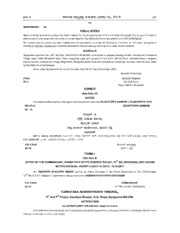
Karnataka Gazette, 2014-01-16, Part-5
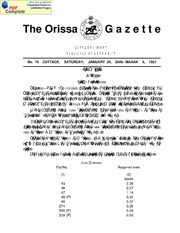
Odisha Gazette, 2006-01-07, No. 78
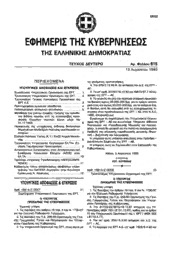
Greek Government Gazette: Part 2, 1993 no. 615
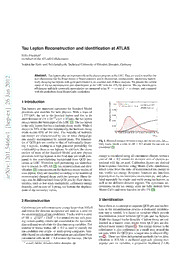
Tau Lepton Reconstruction and Identification at ATLAS

Parent-Infant Psychodynamics: Wild things, Mirrors and Ghosts
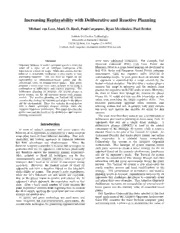
DTIC ADA459203: Increasing Replayability with Deliberative and Reactive Planning
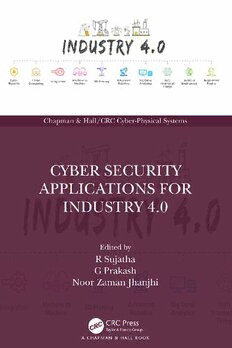
Cyber Security Applications for Industry 4.0
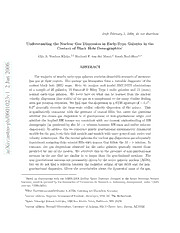
Understanding the Nuclear Gas Dispersion in Early-Type Galaxies in the Context of Black Hole Demographics

iOS 10 Swift Programming Cookbook
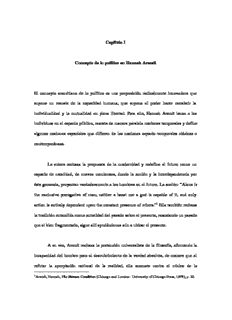
Capítulo 1. Concepto de lo político en Hannah-Arendt

ERIC EJ1066699: Marla Rules
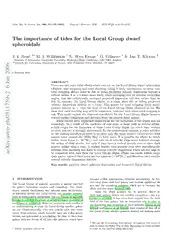
The importance of tides for the Local Group dwarf spheroidals
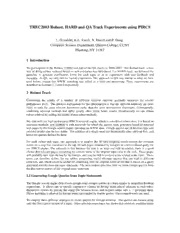
DTIC ADA456258: TREC2003 Robust, Hard and QA Track Experiments Using PIRCS

+CA EKİ, SIFATIN ANLAMINI GÜÇLENDİRİR Mİ?

Government and political life in England and France, c.1300-c.1500
